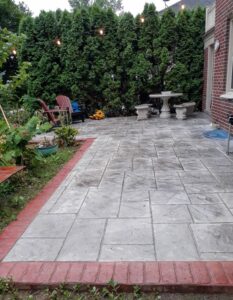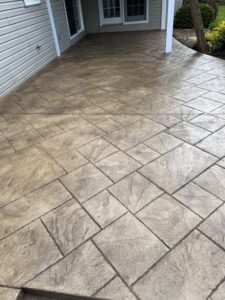
A concrete sidewalk is an essential part of urban and residential landscapes, offering durability, functionality, and aesthetic appeal. Whether in a bustling city, a quiet suburban neighborhood, or a commercial space, sidewalks provide safe pathways for pedestrians while enhancing the overall look of the surroundings. With its long lifespan, low maintenance, and versatility, concrete remains the top choice for sidewalk construction.
Why Choose a Concrete Sidewalk?
Concrete sidewalks have been a staple in infrastructure for decades due to their numerous advantages. Unlike asphalt or paver walkways, concrete offers exceptional strength, weather resistance, and design flexibility. Here are some key benefits of choosing concrete for sidewalks:

1. Durability and Longevity
Concrete sidewalks can withstand heavy foot traffic, extreme weather conditions, and regular wear and tear. When properly installed and maintained, they can last for decades without significant deterioration.
2. Low Maintenance
Unlike other materials that require frequent repairs, concrete sidewalks demand minimal upkeep. Regular cleaning and occasional sealing can keep them in excellent condition for years.
3. Safety and Accessibility
A well-constructed concrete sidewalk provides a smooth and even surface, reducing the risk of tripping hazards. It also complies with ADA (Americans with Disabilities Act) requirements, ensuring accessibility for all individuals, including those with mobility challenges.
4. Cost-Effective
While the initial installation cost of a concrete sidewalk may be higher than some alternatives, its longevity and low maintenance make it a cost-effective investment in the long run.
5. Design Versatility
Modern concrete sidewalks offer a variety of design options. From stamped and colored concrete to decorative finishes, homeowners and property developers can customize sidewalks to match the surrounding landscape.
Types of Concrete Sidewalks
Concrete sidewalks come in different styles and finishes to suit various needs and preferences. Some of the most popular types include:
- Traditional Gray Concrete – The classic choice for sidewalks, offering strength and simplicity.
- Stamped Concrete – Designed to mimic brick, stone, or tile patterns, adding a decorative touch.
- Exposed Aggregate Concrete – Features a textured surface with small stones or pebbles for added grip and visual appeal.
- Colored Concrete – Enhances sidewalks with various hues to complement surrounding architecture and landscaping.

Installation and Maintenance Tips
Installation
A properly installed concrete sidewalk requires a solid foundation, the right mix of concrete, and proper finishing techniques. Contractors typically follow these steps:
- Excavation and Base Preparation – Removing debris and leveling the area before adding a compacted gravel base.
- Formwork and Reinforcement – Using wooden or metal forms to shape the sidewalk and adding reinforcement (such as rebar or wire mesh) for extra strength.
- Pouring and Finishing – Pouring the concrete, smoothing it, and adding any desired textures or patterns.
- Curing – Allowing the concrete to set and gain strength over several days.
Maintenance
To extend the lifespan of a concrete sidewalk, follow these maintenance tips:
- Seal the surface to protect against moisture and stains.
- Clean regularly using a mild detergent and water to remove dirt and debris.
- Repair cracks promptly to prevent further damage and ensure safety.
Final Thoughts
A concrete sidewalk is a smart investment for residential, commercial, and public spaces. Its durability, aesthetic potential, and low maintenance make it the go-to choice for creating safe and long-lasting pedestrian pathways. Whether you're planning a new sidewalk installation or looking to upgrade an existing one, concrete offers unmatched reliability and versatility.

































